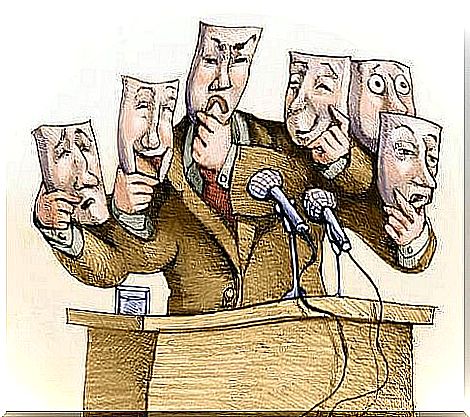Three Tactics Used In Political Propaganda

Although political propaganda was little used in the last decades of the 20th century, the effect is still noticeable today. In fact, today, due to social media and other platforms, this concept is disguised as persuasion or advertising.
What is political propaganda?
Political propaganda is a form of communication that forms part of social and political systems. This concept has been studied extensively throughout history. In order to understand the concept of political propaganda, we must explain three basic criteria:
- Content : The propaganda content must be political. The message may at first look non-political, but after examining it a little more, we find its political connection.
- Control over the message : An important factor is that the issuer has 100% control over the message. This applies in the production phase and in broadcasting.
- Aim : The purpose of the message is to promote the issuer’s interests and ideas. In the meantime, the message also intends to provide a specific response from the audience with a predetermined goal.
In this article, we discuss some of the techniques used in political propaganda.

Labeling techniques
These techniques use some form of labeling as a major resource. The idea is to use certain terms that have an emotional or conceptual resonance to associate the message with positive or negative aspects. There are many ways to apply this technique in political propaganda:
- Use of negative labels : When something is negatively labeled, even though there is not enough information to support this negative label. A clear example is to call a group of people “evil” just because they represent different ideas.
- Asymmetric definition : Take advantage of the ambiguities in a few words to ensure that the audience receives a message that deviates from reality. An example of this is when politicians say that the goal of war is to achieve peace. An ordinary citizen and a governing body do not define peace in the same way.
- Echo-generalization : Use of vague expressions with great emotional strain. For example, when a candidate promises to bring “big change” to a country.
Association techniques
These strategies are used to ensure that the recipients link the characteristics of a particular concept (positive or negative) with another that is basically neutral to the audience.
- Compilation : To associate independent ideas by putting them together. This works even without even implicitly relating the two ideas. An example is that “person X is authoritative and person Y plays golf with person X every Thursday”. Here is the idea to make person X look as authoritative as person Y.
- Virtual words : Using specific words that generate positive emotions in the audience. An example of this is using words like “freedom”, “security” and “truth” in speeches.
- Ordinary people : To use images that identify with people’s everyday lives, their customs and language to give them a sense of belonging. An example of this is the use of images of young, middle-class couples in political advertisements.

Techniques in political propaganda based on source security
The main goal of these techniques is to resort to a reliable source to validate an idea or message. Some examples of this include:
- To invent an opinion through secret sources : To use sources whose identity is never revealed and always talked about in general, by quoting that experts confirm a message without mentioning specific people. This uses anonymity to avoid confirming a message. An example of this is a message in line with “Sources confirm that party X is being financed illegally”.
- Wise men can not be wrong : To quote prestigious people who confirm an idea or a message. For example, “X person said this… and if this person said it, no one can ignore it”.
- Condemn the source : To discredit an idea by simply attacking the source. A clear example of this is calling someone a liar for tearing their message apart. In philosophical circles, this is known as an ad hominem argument.
To conclude
This article has touched on some political propaganda tactics. However, there are many more that exist. It would be naive to think that we are not influenced by this political propaganda. Therefore, it is important to know its techniques so that we can avoid being persuaded by political forces.









